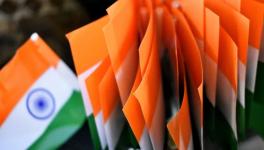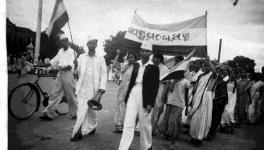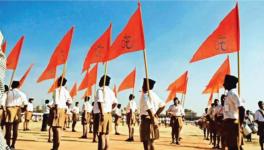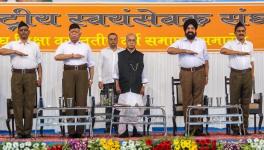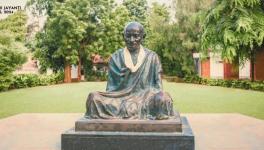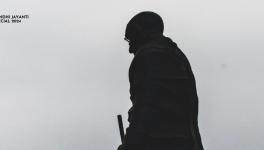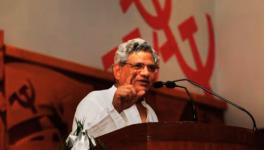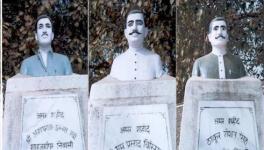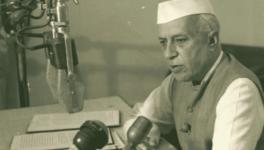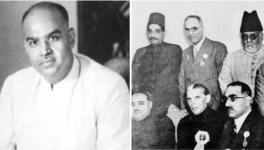Relook at Books on Indian Revolutionaries: Remembering Madan Lal Dhingra
Shaheed Madan Lal Dhingra (Punjabi), Pritam Saini, 1st ed. 1986, Punjabi University Patiala publication, pages 64
This small monograph carries more details about Madan Lal Dhingra and family than many other books. Some details of Sahib Dittamal Dhingra and his eight children’s are given in this narration. The family migrated from Sahiwal and settled in Amritsar, where he built six kothis (bungalows), 21 houses, had six buggies. His was the only car owned by an Indian that ran on Amritsar roads.
Madan Lal Dhingra was an oddity in this Rai Sahib British loyalist family. His younger brother, Bhajan Lal, also redeemed himself by becoming a Sufi and dera head, Lala Shah at Lyallpur (Faislabad).
His elder brother, Kundan Lal Dhingra, referred him to Curzon Wylie in London, where he went for studying engineering and whom he shot dead. Dhingra was executed on August 17, 1909.
One of his brothers, Behari Lal Dhingra, was Prime Minister of Jind State and was notorious for his atrocities. His son, Baldoon Dhingra, became English professor and writer at Lahore, whose daughter Leena Dhingra became director-actress and wrote about Madan Lal, whose name was banned in the family.
Most members of the Dhingra family were either doctor or barristers. The book has several references to books. Author Rajani Palme Dutt’s introduction is also there. He was Swedish Prime Minister Olof Palme’s cousin, as his mother was Swedish, and on whose name he had his second name. Indu Lal Yajnik’s book on Shyam ji Krishan Verma’s reference is also included.
The book has seven chapters- -- the first is on political conditions of the times, the second is on Dhingra family details and Dhingra’s birth is mentioned as February 18, but was later confirmed as September 18.
Madan Lal revolted in hid family and did labour in Bombay. He also drove a tonga, went to London, returned, went again in 1906 and stayed there till the end. He joined India house set up by Shyam ji Krishan Verma, came close to Savarkar, who tested him by putting a sharp-edged cutter into his hand.
Dhingra later joined revolutionary activities and shot dead Curzon Wylie on July 1, 1909, and was hanged after a short trial on August 17, the same year. His court statement was published in Daily News due to Savarkar’s efforts, which made him famous. He was buried in Pentonville prison, but his remains were brought to India on December 13, 1976, when Udham Singh’s remains were also brought to the country.
Aapa Var Amar Shahid Madan Lal Dhingra (Punjabi), Achhar Singh Kharlveer/Kulwinder Singh Sohal, 1st ed. 2009, Lok Likhri Sabha UK publication, pages 152, price 2/Pound-Essays and Poetry collection
The preface to this book has been written by Desh Bhagat Yadgar Hal general secretary Naunihal Singh. It has five articles – the first by Bhagat Singh, the second by Gurbux Singh Banoana, the third by Harish Malhotra, the fourth and fifth essays are in English by Radha D’ Souza and Leena Dhingra, grandniece of ML Dhingra, daughter of Baldoon Dhingra.
In second part of the book, 135 poets and 50 plus poems have been collected, which are rather poor. It is a martyrdom centenary tribute to Dhingra by Punjabi writers in the UK.
Tryst with Martyrdom: Trial of Madan Lal Dhingra, Malwinderjit Singh Waraich/Kuldip Puri, Unistar publisher Chandigarh, 2003 ed.
This book’s material was provided by Giani Kesar Singh to the editors, though Gianiji’s introduction and the last chapter from his autobiography are part of the book.
The book has three chapters -- The Genesis, The Trial and The Perspective. The first two chapters are contributed by Waraich and the last one by Kuldip Puri, son-in-law of Principal Sujan Singh from the education department of Panjab University, Chandigarh.
Waraich has given a general background and the trial details with newspaper clippings, but Puri has analysed the act and its impact. On the whole, this is a good book. The trial was farcical, but Dhingra drew praise for his stoic refusal to accept court authority and welcomed the execution sentence. He did not hire a lawyer. His family hired one, buy only to watch and not defend. Dhingra’s statement exposed the British colonial regime’s exploitation of India.
London De Shaheed(Punjabi), Joginer Shamsher, Ist ed. 1992, Ravi Sahit Prakashan Amritsar, pages 104
This is one of better books on Madan Lal Dhingra and Udham Singh’s sacrifice in London. The writer has focused on fact-based history, as he perceives history to be. It has reference to famous Indian communist Rajani Palme Dutt, who lived mostly in London and whose book, India Today, is still considered a classic.
The writer’s reference to Rajani makes his ideological position toward the Left clear. In the introduction, the writer also refers to Banke Dyal singing his song Pagdi Sambhal Jatta on March 21-22, 1907 at a peasant conference in Lyallpur.
The book is divided into seven chapters. The first chapter focuses on contemporary movements of 1925. The second on the preliminary conditions of the Indian freedom struggle. The third chapter brings to light Maharashtra’s freedom struggle toward the end of 19th Century. In the fourth chapter, the writer comes to the main theme of the Curzon Wylie killing in London by Dhingra, inspired by VD Savarkar and Shyamji Krishan Verma.
In the fifth chapter, the writer presents Punjab lieutenant Governor Dangile Ibbotson’s report on the condition of peasants in Punjab. The sixth chapter is devoted to Michael O’Dwyer’s killing by Udham Singh in Caxton Hall of London. O’Dywer was Punjab’s Lieutenant Governor during 1913-1919. Lord Zetland was Bengal Governor during 1917-22 and Secretary of State for India from 1935 onwards. They came to address a meeting in this hall on March 13, 1940.
The ‘Butcher of Amritsar’ General Dyer (Jallianwala Bagh massacre) had already died of multiple ailments in 1927. Lord Lamington was also there. Udham Singh wanted to kill both Zetking and O’Dywer, but only O’Dwyer was killed. Udham Singh observed 42 days hunger strike inside jail following Bhagat Singh.
The seventh chapter is focused on Udham Singh in 1940. All leaders condemned Udham Singh-Lala Ramsarandas, Sunder Singh Majithia, Sir Chhotu Ram, Hridainath Kunjru, Dewan Chaman Lal, Kapurthala king Jagjit Singh, Hari Singh Gour etc. Only the German Radio supported him by saying: “The cry of tormented people spoke with shots.”
To conclude, the writer reproduced Udham Singh’s letter to Jahal Singh. The eighth chapter focuses on the rationale behind O’Dwyer’s killing by Udham Singh. The book has been written with right perspective.
The writer is a retired professor of JNU and an honorary adviser to the Bhagat Singh Archives and Resource Centre, Delhi. Views are personal.
Get the latest reports & analysis with people's perspective on Protests, movements & deep analytical videos, discussions of the current affairs in your Telegram app. Subscribe to NewsClick's Telegram channel & get Real-Time updates on stories, as they get published on our website.









